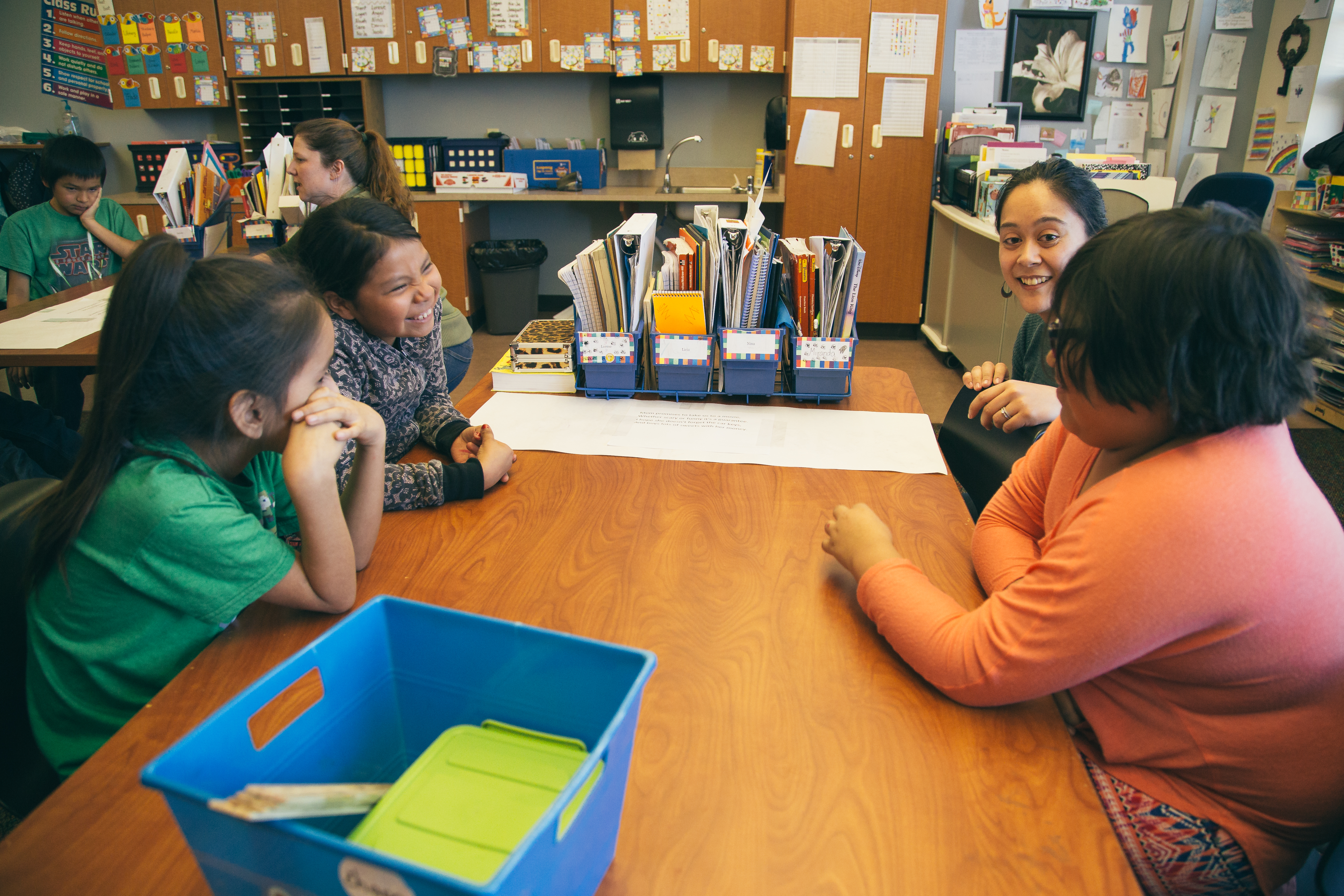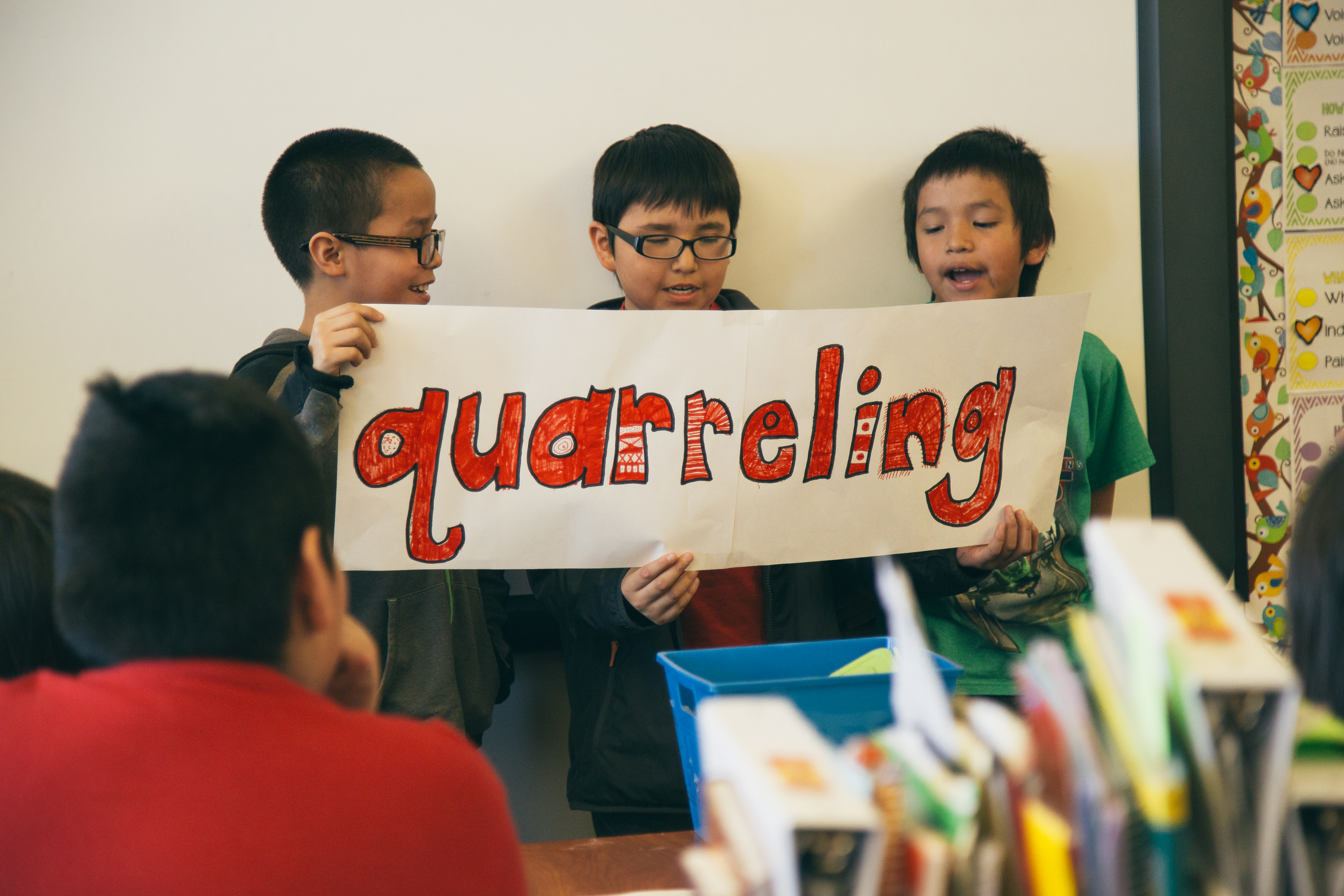
Writing to Celebrate Student Voice: Flocabulary Visits Standing Rock
At the start of 2017, Flocabulary traveled to Standing Rock, ND to work one-on-one with students in the community. Why the trek from our hometown of Brooklyn to the Great Plains? The students in this community are Lyric Lab pros, and with the school’s special focus on the arts as part of the nationwide Turnaround Arts program, we wanted to collaborate to offer avenues for student voice and expression in a community embroiled in a national controversy.
Over four days in North Dakota, our team visited classrooms at Standing Rock schools to run a program we call FlocabX, which includes professional development for educators on culturally-responsive pedagogy and writing academic rhymes, along with a structured writing contest for students. To conclude and celebrate students’ work at the end of the week, the schools held a celebration where students performed their rhymes.
Shawna Marion, ELL Instructional Coach for Primary Circle with the Missouri River Educational Cooperative in North Dakota, and our team members who participated in the event, Julia and Chris, share their reflections from the memorable week.

Julia Ellingwood
Senior Customer Success Manager, Flocabulary

Chris Camp
Associate Art Director, Flocabulary

Shawna Marion
Missouri River Educational Cooperative
Julia: The project took place over four days, kicking off with a three-hour teacher PD session on Monday. Teachers learned the Flocab rhyme-writing formula and we discussed approaches to two different themes: “Historical Heroes” and “Issues I Care About.”
After the session, teachers went back to their classrooms and helped students select their topics and, if necessary, research key facts that would make up the content of their rhymes. I went into classrooms myself and modeled rhyme-writing with students, following a gradual release model: I do, We Do, You Do.
By the end of the week, teachers and students had finished and perfected their rhymes, adding their own creative touches: one class incorporated musical accompaniment with a drum and wooden flutes, while another added a rap battle element to their rhymes.


Julia: My high school English teacher once told us that students are bad writers because they don’t have anything original to say. I don’t think that’s true at all; I think students have a lot to say, but they sometimes struggle with formal writing styles and vocabulary. That’s one of the reasons why rhyme writing is such an effective way to encourage student voice: it’s informal, it’s accessible, and students enjoy doing it.
The project at Standing Rock worked so well because students had something powerful to say: they are concerned about the issues that face the world and their community, and they need a way to talk about it and present their views. Rhyme-writing is simply the conduit for that: it exists at the intersection of creativity, literacy skills, student interest, and student voice.
[Tweet “Rhyme writing exists at the intersection of creativity, literacy skills and student voice.”]
Shawna: The students’ confidence was immediately elevated when they were encouraged to call out topics of interest and importance. Each idea was equally important and valued, and shown by writing each concept on the board for the classroom community to consider.
It was quite evident that our teachers and admins bought-in when the most reluctant speakers, and non-participatory students were rising out of their seats, and excitedly calling out suggestions to form the couplets. Rarely do we see that kind of excitability with writing tasks.
Shawna: I found the 3rd grade group “Vocabulary Garden” fascinating because the students’ energy and engagement was so high! The entire class was engrossed in work around vocabulary from their reading for the week and writing couplets in small groups. They eagerly would complete one, then request another. I have never seen that ambition around reading vocabulary before.
The other two that really stand out included one about Dakota Access Pipeline, and the “Three Native Americans That Made History.” One fourth grade class even added musical elements that they created themselves using a drum and flutes. That kind of honesty spoken so eloquently through 11- and 12-year-old voices was heard loud and clear during the lyceum. The school community completely embraced the students performances with warm applause, and palpable appreciation.
Julia: I particularly loved a 4th grade rap about the buffalo; the students had solo parts which really demanded that they step up and speak proudly, and they rose to the occasion beautifully. The rap also incorporated Lakota words like “tatanka” (meaning “buffalo”), demonstrating how rap can be inclusive of multiple cultures.
Chris: A group of students performed about the Dakota Access Pipeline and it brought tears to my eyes. Our visit coincided with the protests happening on the reservation, and I couldn’t help but feel the gravity of it everywhere. One student’s rhyme stood out where he succinctly addressed being labelled a protestor when he was really a “water protector.” That resonated with me.
Chris: In the education field, I visit many classrooms but at Standing Rock, the experience was truly unique. Observing the teachers and students come together to put on an education-fueled rap performance was powerful, to say the least. Class after class proudly took center-court in the gymnasium and performed their raps. I was wowed by the overall sense of support and community, a sentiment that clearly shines through each and every student. The Standing Rock student voice is loud, and everyone in that gymnasium heard it!
Julia: I think the thing to keep in mind for other schools wanting to do a performance like this is to promote a culture of celebration, and it begins in the classroom. In order for students to celebrate others, they must also feel heard and celebrated themselves, so starting with active listening and positive affirmations—both teacher to student and peer-to-peer—is a good place to start.
Catch a recap of students performing their impressive rhymes in this video:
Shawna: The partnership bubbled up school pride, support and praise for students and staff taking creative risks. The administration was deeply moved by the fellowship and community outpouring of love. It was truly a week of learning made visible by participants and observers.
Julia: Student choice is important, but so is flexibility, accommodation, and inclusivity. Every student can participate in this project, whether it’s in the research process, the actual rhyme-writing, coming up with rhyming word banks, or being involved in selecting the beat or the musical accompaniment.
The number one takeaway for students has to be pride in their work, because it’s that pride in themselves that will propel them to keep collaborating with their peers and improving their writing abilities.
Flocabulary offers a limited number of FlocabX programs every school year for districts. If your district is interested, learn more below:

